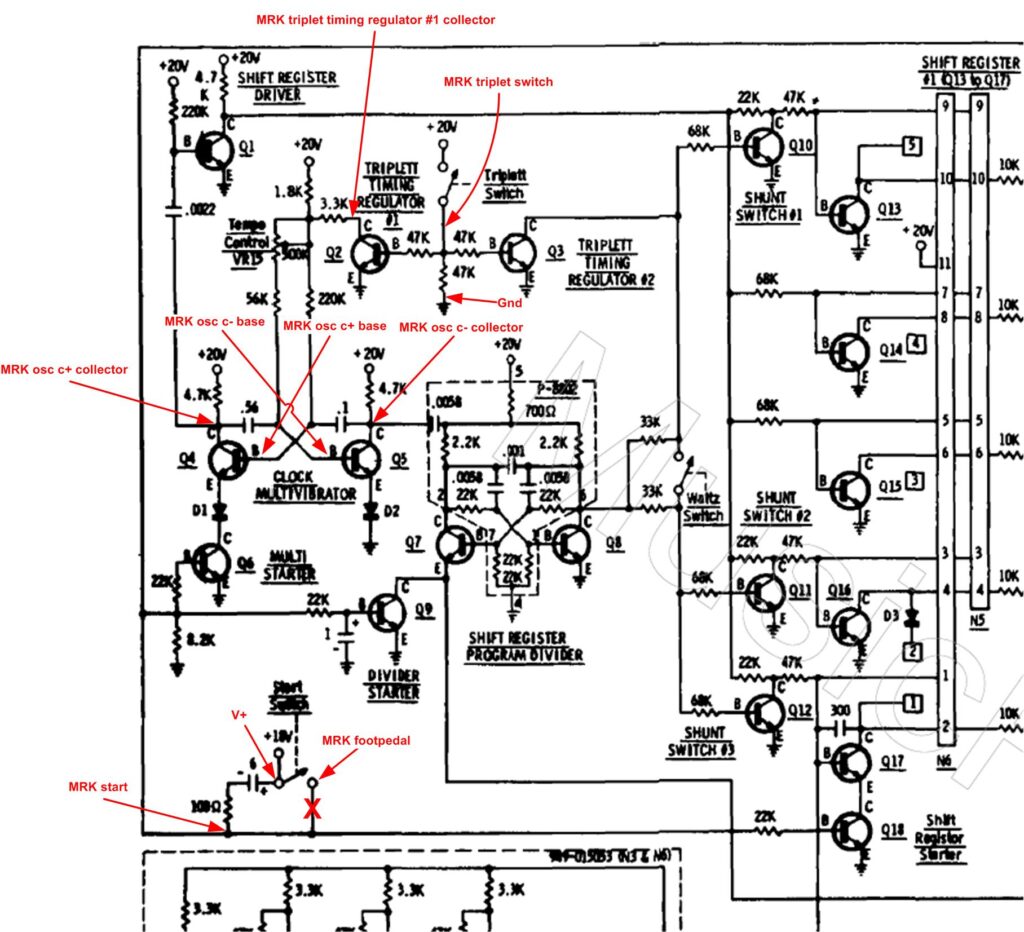Trigger the voices
Here you can see the trigger points for the Maestro Rhythm King.
In the upper right corner you can also see the +12V power supply for uniPulse.
Here is a picture of the voice board.A kind person from 9bit.se sent us this annotated version:
Interfacing the clock
The following created by our customer James Lo who did an awesome job interfacing the Maestro Rhythm Kings unusual clock circuit.
These instructions show a way to inject uniPulse sync clock and sync gate signals into a Maestro Rhythm King MRK-2. This is the MRK-2:
The MRK-2 has the unusual feature that it changes internal clock speed dependent on whether triplet or 16th note beats are selected. The circuit also encapsulates one of the more convenient clock injection points inside an RC network SIP, so we have to resort to unusual means. My solution parallels the transistors that comprise the “clock multivibrator” and selects the correct sync pulse based on the current beat. Here is a schematic-view of the points we will be attaching to:
Next is a component-view of those same points. The board containing the clock circuit is underneath the voice board, which can be easily removed to gain access.
To interface the uniPulse to the MRK-2, the uniPulse triplet and 16th note sync pulses are first level-shifted to the MRK-2’s v+ (~19V), and then one is selected by the triplet switch position (which is itself set by the current beat). The chosen pulse is used to drive a pair of BJTs that take over from the MRK-2’s clock multivibrator transistors. The MRK-2’s transistors are disabled by shorting their bases to ground via diodes, and the BJTs are enabled by shorting their sources to ground via diodes. Finally, the sync gate is used to switch v+ to the MRK-2’s start signal bus, mirroring the function of the start footswitch.
Here’s the uniPulse configuration:
The MRK-2’s clock multivibrator produces 15ms positive and negative pulses at all frequencies, so its duty cycle is frequency dependent. The uniPulse sync clock however is a square wave, but it doesn’t seem to matter. It’s possible to switch between duple and triplet beats while the machine is running, but you risk losing sync alignment. Note that the selection of active components isn’t particularly sensitive; you could, for instance, substitute a CD4011 for the CD4093. I just used garden variety small signal transistors I had left over from previous projects.
One known issue is that the clock rate is not quite right for the waltz and swing waltz beats.







